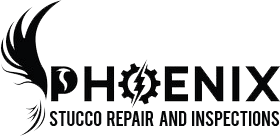The benefits of modern plaster go beyond just protecting the outside of your home. It is a great insulator and can help dramatically improve your homes heating and cooling efficiency, therefore lessening your overall utility cost. Stucco is a great choice for hot summers and cold winters. When installed properly by a professional installer, it can also insulate your home from the sounds of the outside. This is great if you happen to live near a busy road or highway. Modern mixture are made in a much more environmentally friendly way than the traditional types, is better looking and much more durable. It is also fire retardant and has been known to have saved homes from being consumed by flames from fires exterior to the home. It is also resistant to things like mildew, mold and rot. An update of your home with a new exterior is a great way to improve your homes appearance and resale value. It’s also a great way to earn the envy of your neighbors.
Traditional
Traditional Stucco is a multi-layered, durable coating that is used to cover both interior and exterior walls. It is created by mixing Portland cement, sand, lime, and water to form a paste, which is then applied in two coats on top of either lath or galvanized mesh. To prevent cracking, an expansive acrylic-polymer finish is often added as a further barrier. This provides the wall with a strong structure that is highly resistant to damage from wind, rain, sunlight, and other environmental factors. As such, stucco remains a popular choice for both commercial and residential projects.
This type is made from a mix of Portland cement, sand, lime, and water, but can also consist of a proprietary mix of additives which may include fibers and synthetic acrylics that add strength and flexibility. This mixture is applied in three coats over a lath base, or a piece of mesh, and many times coated with an expansive acrylic-polymer finish to help ensure it does not crack.
Benefits: This type of siding stands up better to impacts from things like hail or a baseball hit by the neighbors kid for example.
Synthetic(Exterior Insulation and Finish System or EIFS)
Synthetic stucco is a multi-layered exterior finish system designed to protect buildings from the elements and enhance their aesthetics. It begins with a foam insulation board – usually made of polystyrene – which serves as the foundation. This is then followed by an elastomeric coat of synthetic stucco that helps create a strong bond between the structurally sound base and an additional layer of fiberglass mesh. The final step of this process is applying an elastomeric topcoat for extra protection and aesthetic appeal. When properly installed, synthetic stucco can provide superior protection against water damage and extreme temperature changes, making it an ideal choice for many homeowners.
Benefits: Slightly more energy efficient than the traditional type. Because it’s more flexible, EIFS allows for more imaginative designs than traditional types are capable of holding. This type will not typically fade or yellow over time.
Traditional vs. Synthetic stucco
Below is a table outlining some key differences between traditional and synthetic stucco:
| Feature | Traditional Stucco | Synthetic Stucco (EIFS) |
|---|---|---|
| Composition | Cement, sand, lime, and water mixture | Styrofoam insulation board, mesh, and synthetic coatings |
| Insulation | Limited insulation properties | Enhanced insulation due to the Styrofoam board |
| Application | Applied in multiple layers | Applied in a single layer with insulation board |
| Weight | Heavier | Lighter |
| Flexibility | Less flexible, more prone to cracking | More flexible, less prone to cracking |
| Installation | Requires skilled labor for application | Easier and faster installation |
| Cost | Lower initial cost | Higher initial cost |
| Maintenance | May require more maintenance over time | Generally requires less maintenance |
| Moisture Resistance | May be more susceptible to moisture | Better moisture resistance |
| Aesthetics | Traditional, textured appearance | Versatile finishes and textures |
| Repairs | Repairs can be more challenging | Easier to repair and patch |
| Fire Resistance | Fire-resistant but not as much as synthetic stucco | Enhanced fire resistance |
| Energy Efficiency | Lower energy efficiency | Higher energy efficiency |
It’s important to note that both traditional and synthetic stucco have their own advantages and disadvantages, and the choice between them depends on factors such as climate, budget, and aesthetic preferences. Additionally, local building codes and regulations may influence the choice of stucco system.
How is it applied?
Traditionally, application occurs using three coats. The scratch coat, brown coat and finish coat. The two base coats are generally applied by hand or are machine sprayed. There are a few ways to complete the finishing coat including hand texturing, troweled smooth, floated to a sand finish or sprayed. In the beginning lath material was spaced strips of wood horizontally installed on a wall. This material supported the wet plaster while it cured. Now metal wire mesh, or netting, replaces the use of wood lath. Because the wire is galvanized, it is resistant to corrosion which makes it appropriate for exterior wall applications. Generally, for exterior wall finishes, lath is installed on top of felt or paper sheet that is weather-resistant to protect the framing from moisture that may pass through.
Stucco Over Siding
In some cases we can apply stucco directly on top of your siding. The siding must be in good shape for this to be a viable option. It is recommended that the siding be removed for the best possible results, but this is a more economical option if it’s necessary. We are always up front with our customers and will only go forward with this option if we feel it is in the your best interest.
